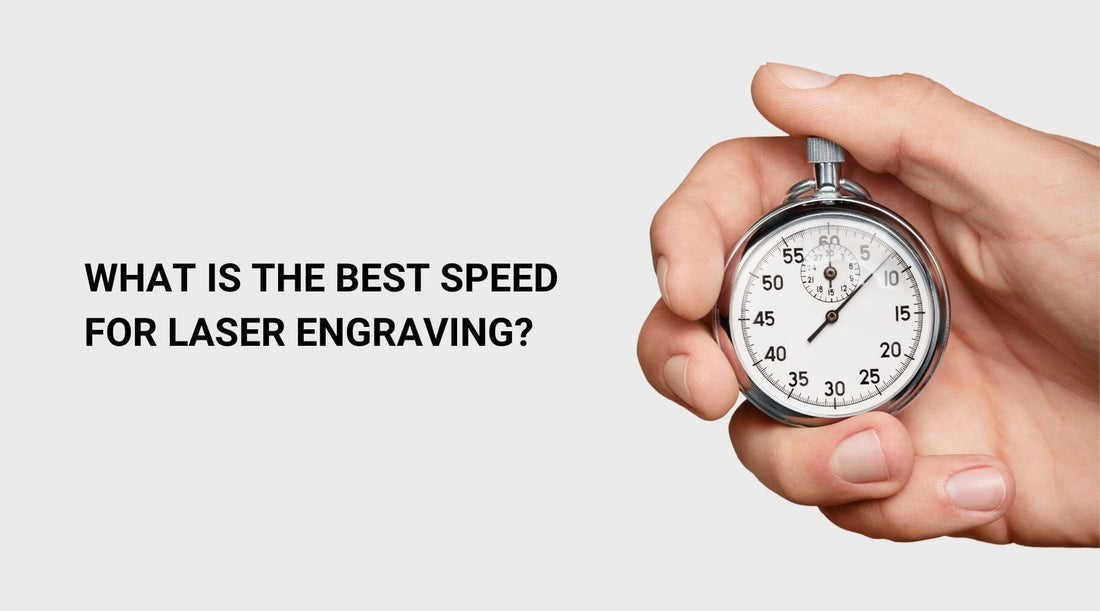What Is The Best Speed For Laser Engraving?

In this tutorial, we'll help you optimize laser engraving for your material using a test file. Explore different speed and power settings to achieve the best results and save time and costs before starting the main project.
Understanding Laser Engraving Speed
The speed of laser engraving refers to the rate at which the laser beam travels across the material during the engraving process. It is typically measured in units like millimeters per second (mm/s) or inches per second (in/s). A higher speed means the laser beam moves quickly, covering more distance in a shorter time, while a lower speed results in slower movement and more dwell time on a specific point.Obviously, the faster it moves, the less time it takes to complete the project. Less time = less cost.
Impact of Speed on Engraving Quality
Engraving Depth and Material Interaction:
The speed of the laser beam affects the depth of the engraving. Higher speeds tend to produce shallower engravings, whereas lower speeds create deeper and more pronounced marks. In some cases, high speeds might not even produce visible engravings, especially on harder materials. Conversely, extremely slow speeds can cause excessive heat buildup and lead to material damage or burning.
Line Smoothness and Accuracy:
A laser beam moving at an optimal speed ensures smoother and more precise lines, resulting in better image clarity and detail. Too high a speed can lead to jagged edges and reduced image quality, while excessively slow speeds may cause overburning and distortion.
Material Type:
Different materials have varying response rates to laser energy. While some materials require faster engraving to prevent damage, others might demand slower speeds to achieve the desired results. Finding the right balance for each material is crucial to avoid compromising quality.
Impact of Speed on Engraving Efficiency
Throughput and Productivity:
Speed significantly impacts the engraving time for each piece. Higher speeds can lead to faster engraving and increased productivity, making it ideal for mass production and large-scale projects. Conversely, slower speeds may be more suitable for intricate designs and detailed engravings.
Energy Consumption:
Faster engraving typically requires more laser power, which can lead to higher energy consumption. This can result in increased operational costs over time. On the other hand, slower engraving might be more energy-efficient but could extend production time.
Finding the Optimal Speed
Material Testing:
To determine the best speed for laser engraving a specific material, conducting tests on scraps or samples is essential. By varying the speed and observing the results, you can identify the speed that produces the desired engraving depth and quality without causing material damage.
Consider Material Thickness:
The thickness of the material plays a role in selecting the engraving speed. Thicker materials may require slower speeds to ensure proper engraving depth, while thinner materials may benefit from higher speeds to prevent excessive heat buildup.
Image Complexity and Size:
The complexity and size of the design also influence the ideal engraving speed. For intricate patterns or detailed images, slower speeds might be necessary to achieve accuracy. Conversely, simple designs can often be engraved faster without compromising quality.
Balance Quality and Efficiency:
Striking the right balance between engraving quality and efficiency is crucial. For large production runs, faster speeds might be preferred to boost productivity. However, for custom or high-value items, slower speeds may be necessary to ensure exceptional quality.
Machine Capability and Laser Power:
The capability of your laser engraving machine and its laser power output will also impact the optimal engraving speed. Some machines may handle higher speeds better than others, so understanding your equipment's limitations is vital.
Conclusion
The speed at which the laser beam moves during the engraving process is a critical factor in achieving the desired results. Balancing quality and efficiency requires careful consideration of material type, thickness, design complexity, and the capabilities of the laser engraving machine. By conducting material tests and experimenting with various speeds, you can find the optimal engraving speed that meets your specific requirements. Whether you're producing mass quantities or crafting intricate designs, understanding the impact of speed on laser engraving will help you achieve the best possible outcomes for your projects.

